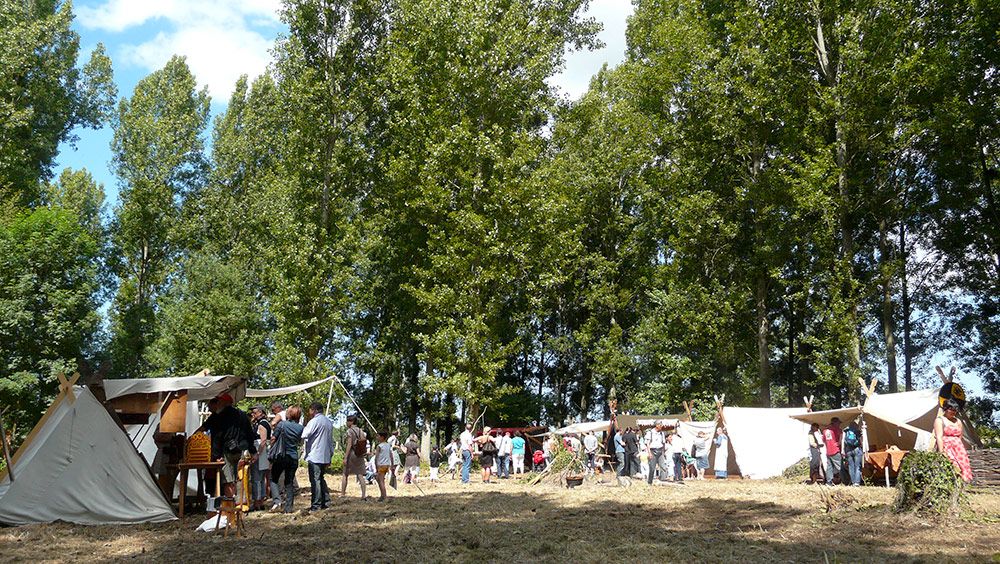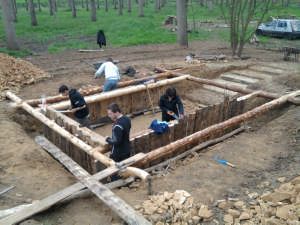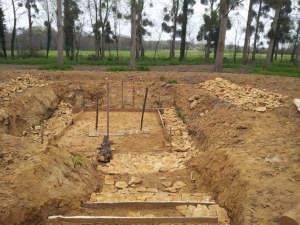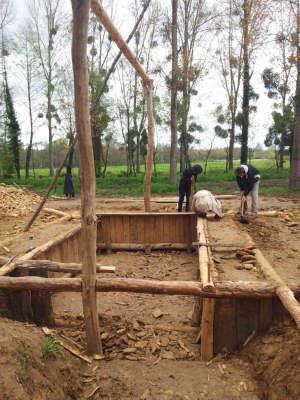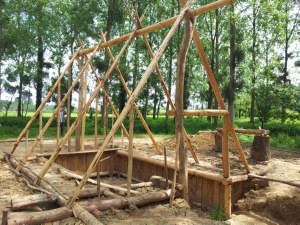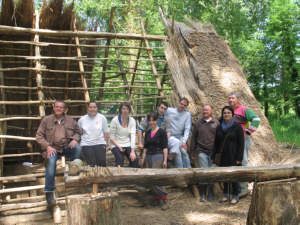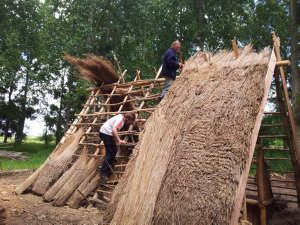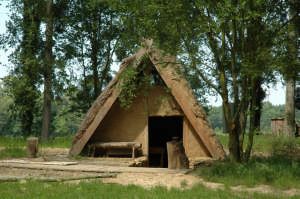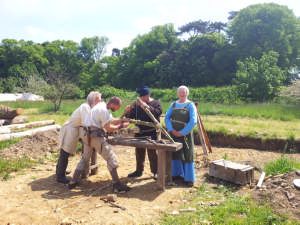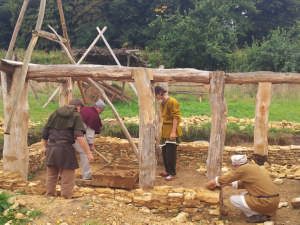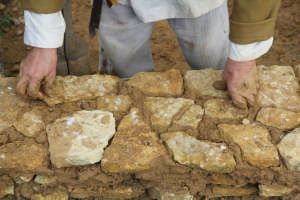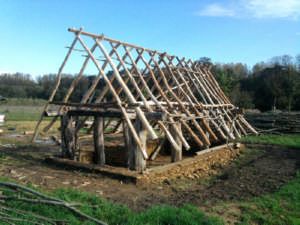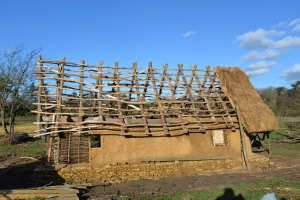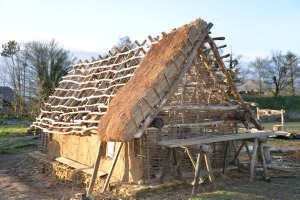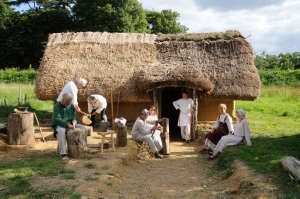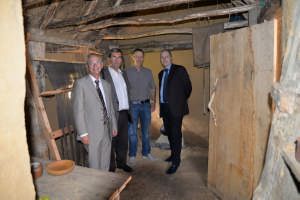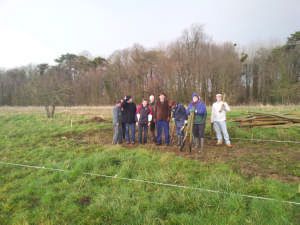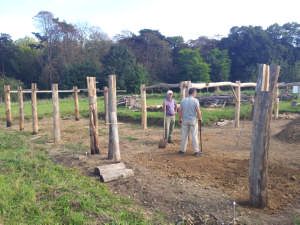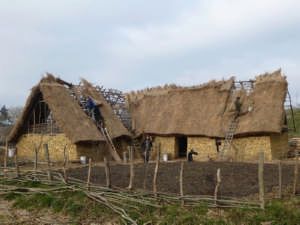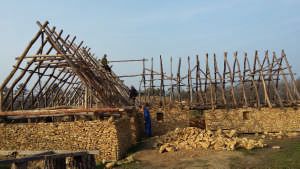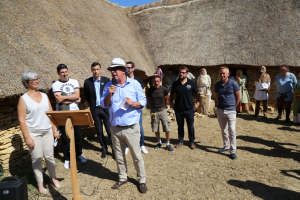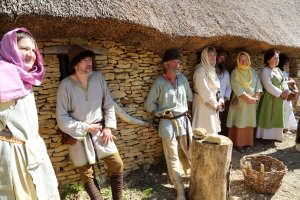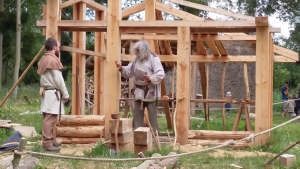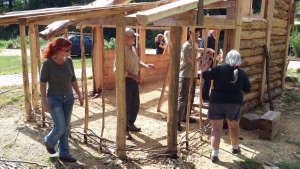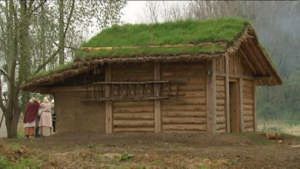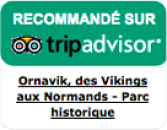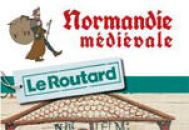Ornavik Construction : the key steps
The historical park
2011 : THE VIKINGS LAND
On May the 28th 2011, it was the first opening day and the beginning of the viking campsite, in the lower part of the Park, near the canal that links Caen to the sea.
That first part of the Park, the vikings' island, also bears the title of « scandinavian area ». The future buildings of this zone are based on real places vikings used to occupy, in which they left archaeological traces.
No traces of viking habitat remains have been discovered so far. That's why our buildings are based on Scandinavian, Northen German, Russian, Irish and English constructions.
We aim to present to you a panorama of the viking world and to highlight this major cultural legacy. It's the beginning of the racial mixing of two culutures which gave birth to a new entity : Normandy.
TOGETHER, VOLUNTEERS AND SCIENTISTS WILL CREATE THREE TYPES OF HABITAT :
-
A longhouse, typical model of a Scandinavian housing, located in the middle of an agricultural field
-
A campsite, perfect example of Nordic nomadism, with trading and raiding activities
-
A viking trading space : model of an important trade which took place on coast towns, especially on the North Sea.
2012 : THE FIRST SUNKEN HOUSE
The half buried house you can find on the Scandinavian area – or vikings' island – is in fact the forge, managed by our blacksmith when the park is opened.
That specific type of construction is typically Scandinavian. The techniques used here allow a fast construction, by placing the roof directly on the floor, providing a better winter insulation.
In the wake of this construction, our volunteers will built the bread oven always using those techniques and skills of this period.
2013 : THE CAROLINGIAN VILLAGE
You'll find it right after entering the Park. It was built only two years after the beginning of the Scandinavian area's construction. Our workers make the first « real » building of the parc : the Carolingian little farm. Now finished, it's located on your right after the entrance.
This house is a possible reconstruction of ruins discovered in an excavation which took place in the old village of Saint-Martin de Trainecourt (now known as Mondeville)
We're pleased to show you, on this Carolingian area, buildings based on archaeological assessment reports. You now have the opportunity to visit accurate historical houses from Caen area of the 10th century
2014 – 2017 : THE CAROLINGIAN GREAT FARM
In Ornavik, we wish to be as accurate as possible in Ornavik. In order to respect the architectural diversity of this period and region, we follow collected data from two other villages of Caen area : Giberville and Vieux-la-Romaine.
At the end of 2014, we started the construction of the second carolingian farm, which was unveiled in June 2017. Named « The Vieux Farm » or « Gaudines' house », it's reconstruction is based on excavations situated in Vieux's area between 1987 and 1992.
Bigger than the first, it's located on the left side of the carolingian village. You can admire its stone walls topped with cob and its thatched roof.
Just imagine : our volunteers worked every Saturday for two years and a half in order to put together those 84m3 of stone walls, recovered from the construction site of the future EHPAD building in Hérouville. A real feat !
2016 : THE HOUSE FROM SÄBY
Because Ornavik is a live site, there is no lack of projects. In 2016, it's in the Scandinavian area that the construction of a Swedish house emerged, house that you can now visit.
Named « the Säby house », it was built based on excavation datas realised in Säby, Sweden. It was unveiled in April 2016, with the help of Swedish students' blueprints, our volunteers and the participation of youths from EPIDE of Alençon.
AND NOW ?
Don't wait to dive in the Norman culture ! Come and push the doors of those houses, smell thatch and see the woodwork of our frames.
In the long shot you'll see, thriving in nature, different buildings from regions once occupied by Scandinavians and Vikings.


